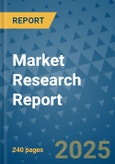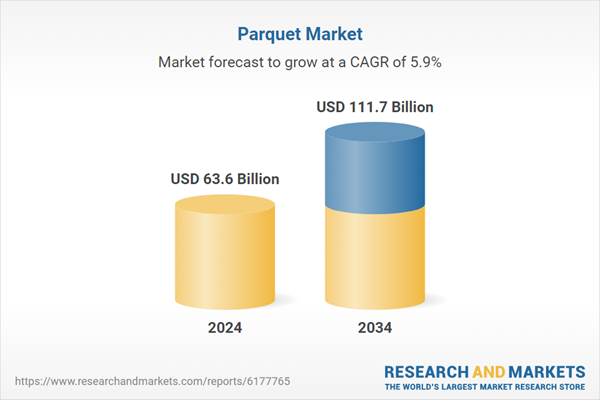Rising interest in upscale interior aesthetics is significantly boosting demand for parquet flooring. Consumers, especially younger demographics and urban residents are increasingly choosing parquet for its rich patterns, timeless elegance, and ability to blend traditional craftsmanship with modern design. This flooring style is now viewed as a premium interior choice that elevates both residential and commercial spaces. The growing variety of finishes and customizable designs adds to its appeal, offering buyers the flexibility to achieve personalized, high-end looks without compromising durability or style.
Major investments in housing and infrastructure from both government and private sectors are creating strong momentum for the parquet industry. As developers seek floor materials that offer both performance and style, parquet has become a top contender due to its resilience and visual appeal. Renovation projects are also on the rise, with homeowners turning to parquet to add character and value. A key shift in the market is the move toward eco-conscious choices, with more consumers opting for parquets made from certified and responsibly harvested wood to align with sustainability goals and green building codes.
The multi-layer engineered parquet segment generated USD 24.3 billion in 2024 and is projected to grow at a CAGR of 6.4% from 2025 through 2034. This segment is experiencing strong growth because of its excellent performance in various environmental conditions. These products consist of multiple wood layers arranged in cross-grain configurations, offering greater durability and moisture resistance compared to traditional solid wood flooring. Their structural integrity makes them suitable for a wide range of applications, including humid areas or spaces with radiant heating systems, making them a preferred option in both residential and commercial settings.
The new construction segment held 52.1% share in 2024 and is forecasted to grow at a CAGR of 5.7% from 2025 to 2034, driven by the global uptick in new residential, institutional, and commercial developments. As urbanization progresses and housing demands rise, architects and builders are turning to parquet flooring for its ability to enhance interior spaces with durability, versatility, and an upscale appearance. Its increasing use in large-scale construction is further pushing growth across developed and developing economies.
United States Parquet Flooring Market generated USD 12.3 billion in 2024 and will grow at a CAGR of 5.8% from 2025 to 2034. The market expansion in the U.S. is being driven by increased remodeling activity, a surge in demand for high-end finishes, and innovations in engineered wood flooring. With growing interest in luxury aesthetics, parquet flooring continues to gain favor for its distinctive appearance and long-lasting performance. High-end housing projects and urban developments worldwide are further boosting the popularity of parquet as a premium flooring solution.
Key companies shaping the competitive landscape in the Parquet Flooring Market include Mohawk Industries, Beaulieu International Group, Tarkett, Armstrong Flooring, Barlinek SA, Shaw Industries, MeisterWerke, Haro (Hamberger Flooring), Kahrs Group, Egger Group, Kronospan, Swiss Krono Group, Boral, Mannington Mills, and Bauwerk Group. To strengthen their position in the Parquet Flooring Market, leading companies are focusing on sustainable product innovation, expanding manufacturing capabilities, and enhancing supply chain efficiency. Many are investing in R&D to develop eco-friendly products made from FSC-certified wood and low-VOC adhesives. Customization is another strategic priority, with firms offering a broader range of patterns, finishes, and installation options to meet diverse design preferences.
Comprehensive Market Analysis and Forecast
- Industry trends, key growth drivers, challenges, future opportunities, and regulatory landscape
- Competitive landscape with Porter’s Five Forces and PESTEL analysis
- Market size, segmentation, and regional forecasts
- In-depth company profiles, business strategies, financial insights, and SWOT analysis
This product will be delivered within 2-4 business days.
Table of Contents
Companies Mentioned
The companies profiled in this Parquet market report include:- Armstrong Flooring
- Barlinek SA
- Bauwerk Group
- Beaulieu International Group
- Boral
- Egger Group
- Haro (Hamberger Flooring)
- Kahrs Group
- Kronospan
- Mannington Mills
- MeisterWerke
- Mohawk Industries
- Shaw Industries
- Swiss Krono Group
- Tarkett
Table Information
| Report Attribute | Details |
|---|---|
| No. of Pages | 240 |
| Published | September 2025 |
| Forecast Period | 2024 - 2034 |
| Estimated Market Value ( USD | $ 63.6 Billion |
| Forecasted Market Value ( USD | $ 111.7 Billion |
| Compound Annual Growth Rate | 5.9% |
| Regions Covered | Global |
| No. of Companies Mentioned | 16 |









